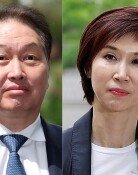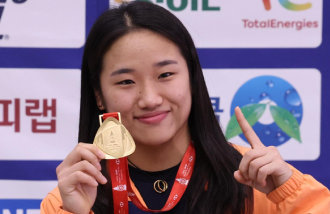Govt Announces Indian Free Trade Talks
Govt Announces Indian Free Trade Talks
Posted January. 04, 2006 03:03,
The Ministry of Foreign Affairs and Trade (MOFAT) announced yesterday that Korea-India free trade agreement (FTA) negotiations will take place at the summit meeting between President Roh Moo-hyun and Indian President APJ Abdul Kalam in Seoul next month.
The two countries will make contact to kick off the FTA negotiations in Seoul on January 5 and 6.
India has recorded 7.5 percent annual economic growth for the past three years and boasts the worlds fourth largest market, with a GDP based on purchasing power parity (PPP) of 3.4 trillion dollars (approximately 3,400 trillion won).
Therefore, the potential economic impact is forecast to exceed far more than those of the free trade deals with Chile and Singapore. The Korean government also expects exports to India to increase to over $3 billion after a bilateral FTA takes effect.
India has the third highest tariff rates in the world, 29 percent on average, following Pakistan and Cambodia, thereby raising the benefit from a prospective FTA. At present, Koreas flagship exports, automobiles and auto parts, are subject to a 30 to 104 percent tariff rate.
Koreas exports to India surged to 4.389 billion dollars last year from 1.384 billion dollars in 2002.
Koreas investment in India rose to 69.65 million dollars last year, up from 40.69 million dollars in 2004. POSCO, Koreas steel giant, revealed a plan to invest 3.7 billion dollars in India last year.
Once the FTA is concluded, Korea stands to increase its auto parts, manufactured goods exports and investment exports to India, and India is interested in facilitating the employment of its IT talent in Korea, and industrialization.
Because the South Asian Free Trade Area (SAFTA) consisting of six nations, including Pakistan, Nepal, and Sri Lanka has officially become effective, India can also benefit from it in terms of exports to member nations.
The attractiveness of Indian investment is cheap, high-skilled talent and abundant resources, said Lee Soon-cheol, a KIEP (Korea Institute for Economic Policy) vice researcher.
MOFAT anticipates that FTA negotiations will go smoothly as the industrial structures of the two countries are mutually complementary. In particular, it sees that there will be no big friction as the varieties of Korean rice and its Indian counterpart are different.
According to its national strategy to build an FTA hub, India has been pushing for several free trade pacts recently, such as at the Gulf Cooperation Council (GCC) and at the Association of Southeast Asian Nations (ASEAN).
Although China and Japan want to sign FTAs with India, their progress is not good since India does not have good feelings toward those nations.
Some say that India chose Korea as FTA partner because it was pressured by China and Japan, with both countries seeking to gain regional hegemony.
Eun-Woo Lee Chang-Won Kim libra@donga.com changkim@donga.com




![[단독]통일교 ‘한학자 보고문건’에 ‘전재수’ 최소 7번 등장](https://dimg.donga.com/c/138/175/90/1/wps/NEWS/IMAGE/2025/12/22/133015670.1.jpg)


